It’s no secret I hike with dogs, and the most recent issue of the Sierra Club’s Condor Call carries a piece I wrote for the Condor Trail-centric “Soaring the Los Padres” column discussing hiking and backpacking with dogs. You can view the entire issue here, but below I’m also sharing the content for those interested.
A big thanks to Dr. Hillary Conant at San Roque Pet Hospital and Dr. M. Angele Blanton (my pack’s own) at Santa Paula Animal Clinic for their input.
Dogs on the Condor
by Craig R. Carey
It’s fall, which means it’s finally time to get on our boots and head out to those favorite corners of the Los Padres backcountry that have spent the last few months languishing in one of the driest summers in memory.
But we bipeds aren’t the only ones ready to get their hike on: dogs are eager companions for trail miles, whether an afternoon saunter or a multi-day wilderness trek. And with temperatures dropping and (hopefully) replenished water supplies, it’s the perfect season for letting Rover answer the call of the wild.
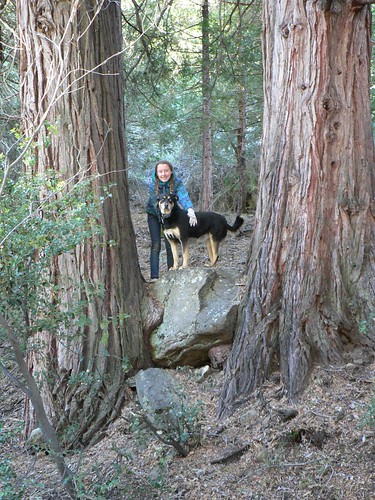
G and Mad-eye | Upper Reyes, Boxing Day 2011
“While hiking and backpacking with your dog provides great exercise, stimulation and bonding, it’s important to ensure you’re doing your part to keep him safe and comfortable,” says Hillary Conant DVM, a Santa Barbara-based veterinarian and frequent backpacker. “Talk with your veterinarian about what you can do to protect your dog from parasites (mainly fleas, ticks, and worms), water-borne infections such as giardia and Leptospirosis (which can be transmissible to people), and get tips to help manage sore joints or protect sensitive feet.”
Rattlesnakes are one of the biggest concerns for local hikers. Snake aversion training is popular with backpackers and thought by some to be safer and more reliable than rattlesnake vaccine, but Santa Paula-based veterinarian M. Angele Blanton DVM suggests hiking hounds nonetheless be vaccinated against rattlesnake venom. “Two shots the first year — a month apart — starting just before rattlesnake season [spring],” Dr. Blanton recommends, along with an annual booster (or more) every year thereafter shortly before spring.
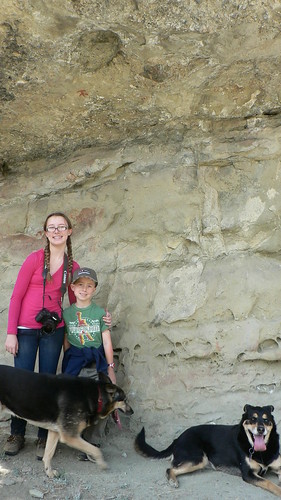
G, Little Man, the Uber-hund, and Mad-eye | Chumash Wilderness, Spring 2013
Dr. Conant further recommends a few basic medications can be helpful to add to your first aid kit, such as Benadryl in case of bee sting or other allergic reaction, Pepcid AC for stomach upset, and a safe pain reliever such as Tramadol which can be prescribed by your vet. Many common medications (especially the anti-inflammatories) can be dangerous to dogs so don’t assume what’s good for you is also good for them.
National Forest lands are among the most welcoming to dogs (unlike National Park lands where dogs aren’t allowed on most trails, in the wilderness, or in waterways), but there remain some basic guidelines for a safe and successful outing with your boon companion.
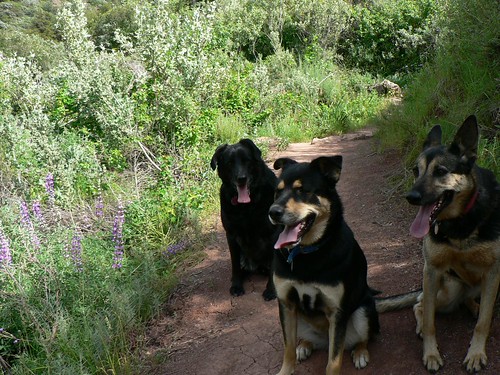
12 Paws Pause | Cozy Dell Trail, Spring 2010
The Law. Know what the rules are for your destination. Every agency has different regulations with regard to dogs, and even those vary from area to area (e.g., dogs must remain leashed in campgrounds in most areas, but along remote trails are allowed off-leash provided they remain under voice control). Know the rules before you hit the trail.
The Conduct. Your dog should be well-trained, and – when in areas dogs are permitted off-leash – always under voice control. Don’t allow your dog to chase wildlife, tear up the landscape, or jump on other (unknown) hikers. (And while most fellow hikers will enjoy the company of your well-behaved mutt, don’t assume everybody will love your dog as much as you do.)
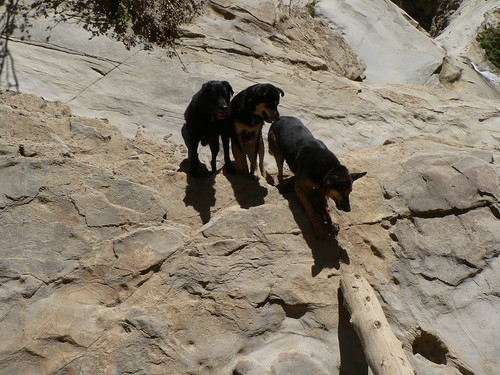
The Uber-hund Gives a Clinic | Potrero John Falls, Summer 2010
The Duty. If you hike the front-country, you’ve likely noticed the dog waste bags lining the sides of trails like a procession of foul cairns. Don’t be that hiker – if you can bag it, you can carry it. Deeper in the Los Padres, it is acceptable to bury your dog’s waste as you would your own, following the same protocols and distances from waterways and campsites.
In the southern Los Padres, some of the best stretches of trail for dogs are along the Condor Trail – naturally! The Sisquoc route in the San Rafael Wilderness, the Gene Marshall-Piedra Blanca NRT and Sespe River Trails in the Sespe Wilderness, and Santa BarbaraCanyon in the Dick Smith Wilderness are all fantastic options for a hearty hound. Water, shade, and relatively forgiving soil make any one of these routes an intrepid canine’s paradise.
Release the hounds!
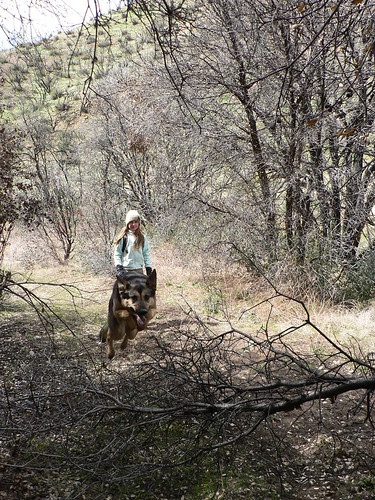
G and the Uber-hund | Mine Camp Trail, Spring 2009
Craig R. Carey is a frequent wanderer of the Los Padres backcountry, LPFA Volunteer Wilderness Ranger, active Scouter, and author of Hiking & Backpacking Santa Barbara and Ventura (Wilderness Press, 2012). You can read his idle musings at craigrcarey.net.


Leave a Reply